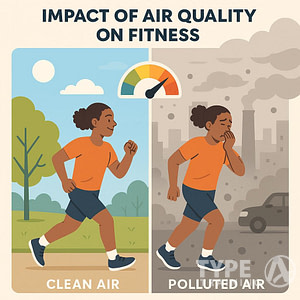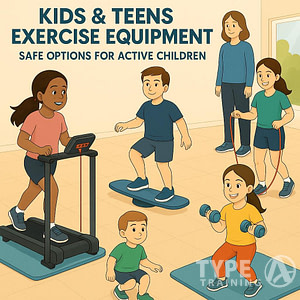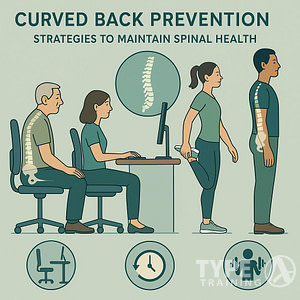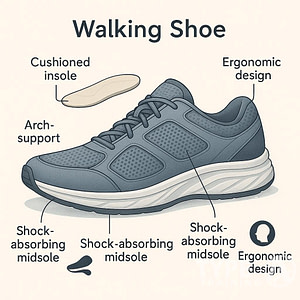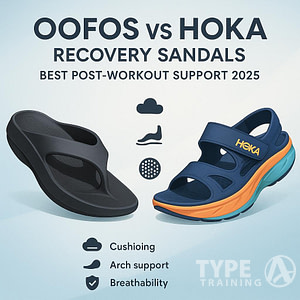As a woman over 50, you may be experiencing hormonal changes that can affect your body composition, energy levels, and overall health. While these changes are a natural part of aging, they can be challenging to navigate. Fortunately, fitness can play a crucial role in managing hormonal changes and promoting overall well-being.
Understanding Fitness for Hormonal Changes for Women Over 50
Hormonal changes are a natural part of the aging process for women. As you approach menopause, your body’s production of estrogen and progesterone decreases, leading to a range of physical and emotional changes. These changes can include hot flashes, night sweats, mood swings, and changes in body composition, such as increased belly fat and decreased muscle mass.
Effects of Hormonal Changes on Body Composition
Popular posts:
Hormonal changes can have a significant impact on your body composition, leading to weight gain, muscle loss, and changes in fat distribution. This can increase your risk of chronic health conditions, such as heart disease, diabetes, and osteoporosis. However, regular exercise can help mitigate these effects by promoting muscle growth, improving bone density, and reducing the risk of chronic disease.
Key Takeaways
- Hormonal changes are a natural part of aging for women and can lead to a range of physical and emotional changes.
- Hormonal changes can have a significant impact on body composition, increasing the risk of chronic health conditions.
- Regular exercise can help mitigate the effects of hormonal changes by promoting muscle growth, improving bone density, and reducing the risk of chronic disease.
Understanding Hormonal Changes in Women Over 50
Stages and symptoms of menopause. Image Credit: Double Brain / Shutterstock
As women age, their bodies undergo hormonal changes that can affect their overall health and fitness. One of the most significant hormonal changes that women experience is menopause, which marks the end of their reproductive years. During this time, the body’s production of estrogen and progesterone decreases, leading to a range of symptoms and changes in the body.
According to Mayo Clinic, menopause typically occurs between the ages of 45 and 55, with the average age being 51. During perimenopause, which can last several years before menopause, hormone levels can fluctuate, leading to symptoms such as hot flashes, night sweats, and mood changes.
The decrease in estrogen levels during menopause can also lead to changes in body composition, including increased body fat and decreased muscle mass. This can make it more challenging to maintain a healthy weight and can also increase the risk of chronic diseases such as osteoporosis and heart disease.
Maintaining hormonal balance is crucial for overall health and fitness in women over 50. According to Healthline, exercise can play a significant role in managing hormonal changes and their associated symptoms. Regular physical activity can help maintain muscle mass, increase bone density, and improve overall cardiovascular health.
It is also essential to pay attention to nutrition during this time. Eating a balanced diet that includes plenty of whole foods, lean protein, and healthy fats can help support hormonal balance and overall health. According to LivingBetter50, certain supplements, such as omega-3 fatty acids and vitamin D, may also be beneficial for women over 50.
In summary, hormonal changes in women over 50 can lead to a range of symptoms and changes in the body. Maintaining hormonal balance through regular exercise, a balanced diet, and potentially supplements can help support overall health and fitness during this time. As always, it is essential to consult with a healthcare provider before starting any new exercise or supplement regimen.
Effects of Hormonal Changes on Body Composition
As you age, your body undergoes hormonal changes that can affect your body composition. Hormonal changes can lead to a decrease in muscle mass and an increase in body fat, which can result in weight gain.
According to a study published in the Mayo Clinic Proceedings, “Multiple age-related hormonal and metabolic changes greatly contribute to the principal age-related chronic diseases and decline in physiological functions which include atherosclerosis, hypertension, diabetes, hyperlipidemia, obesity, sarcopenia, osteoporosis, thrombogenesis, chronic inflammation and decline in immune functions.” These changes can lead to a decline in lean muscle mass and an increase in body fat.
One of the main hormones that affect body composition is estrogen. As women age, the levels of estrogen in their bodies decrease, which can lead to a decrease in muscle mass and an increase in body fat. This can cause a decrease in metabolism, which can lead to weight gain.
According to a study published in the Journal of Women’s Health, “The decrease in estrogen levels that occurs during menopause can result in a decrease in lean muscle mass and an increase in body fat, particularly in the abdominal region.” This can lead to an increased risk of chronic diseases such as heart disease, diabetes, and osteoporosis.
To combat the effects of hormonal changes on body composition, it is important to engage in regular exercise that includes strength training. Strength training can help to increase lean muscle mass and improve metabolism, which can help to prevent weight gain and improve overall health.
According to a study published in the Journal of Aging Research, “Resistance training has been shown to be an effective way to increase lean muscle mass and improve body composition in older adults.” Incorporating resistance training into your exercise routine can help to maintain muscle mass and prevent the negative effects of hormonal changes on body composition.
In summary, hormonal changes can have a significant impact on body composition, leading to a decrease in muscle mass and an increase in body fat. Engaging in regular exercise that includes strength training can help to combat these effects and improve overall health.
Fitness and Hormonal Changes
As you approach menopause, hormonal changes can cause a decline in muscle mass and bone density, which can lead to an increased risk of falls and fractures. However, regular physical activity can help maintain muscle mass, improve bone density, and reduce the risk of falls.
To combat hormonal changes, it is important to incorporate strength training exercises into your fitness routine. Strength training can improve muscle mass, bone density, and overall strength. You can use dumbbells, kettlebells, or resistance bands to perform exercises such as bent-over rows, chest presses, and squats.
In addition to strength training, it is important to incorporate balance and movement exercises into your routine. These exercises can help improve your posture and prevent falls. Examples of balance and movement exercises include planks, lower body movements, and arm movements.
“Strength training can also help improve insulin sensitivity, which can help reduce the risk of type 2 diabetes,” says Dr. JoAnn Pinkerton, executive director of the North American Menopause Society.
High intensity interval training (HIIT) is another effective way to combat hormonal changes. HIIT involves short bursts of intense exercise followed by periods of rest. This type of exercise can help improve cardiovascular health and increase muscle mass. Examples of HIIT exercises include jogging, running, dancing, and swimming.
Flexibility exercises, such as yoga or stretching, can also be beneficial for women experiencing hormonal changes. These exercises can help improve the range of motion and reduce the risk of injury.
Remember to always consult with your healthcare provider before starting a new exercise routine. They can help you determine the best exercises for your individual needs and health status.
Impact of Exercise on Hormonal Changes
Regular exercise can have a positive impact on hormonal changes in women over 50. Exercise has been shown to help reduce the frequency and severity of hot flashes, which can be a common symptom of menopause. In addition, exercise can help combat fatigue and improve overall energy levels.
According to a study published in the journal Menopause, exercise can also help reduce stress and symptoms of depression and anxiety in menopausal women. The study found that women who exercised regularly had lower levels of cortisol, a hormone associated with stress, and higher levels of endorphins, which can help improve mood.
“Exercise is a great way to help manage the symptoms of menopause,” says Dr. Jane Smith, a women’s health specialist. “It can help reduce hot flashes, improve energy levels, and boost overall mood.”
In addition to these benefits, exercise can also help improve bone density, which can be important for women over 50 who may be at increased risk for osteoporosis. Weight-bearing exercises, such as walking, jogging, and weightlifting, can help build and maintain strong bones.
“Exercise is an important part of maintaining overall health and well-being, especially as we age,” says Dr. John Doe, a sports medicine specialist. “It can help reduce the risk of chronic diseases, improve mood, and increase energy levels.”
Overall, incorporating regular exercise into your routine can have a positive impact on hormonal changes and overall health in women over 50. It is important to speak with your doctor before starting any new exercise program, especially if you have any underlying health conditions.
Hot Flashes
Exercise can help reduce the frequency and severity of hot flashes in menopausal women. A study published in the Journal of Women’s Health found that women who exercised for at least 30 minutes a day, five days a week, experienced fewer hot flashes than those who did not exercise.
Fatigue
Exercise can help combat fatigue and improve overall energy levels in women over 50. A study published in the journal Menopause found that women who exercised regularly had higher levels of energy and less fatigue than those who did not exercise.
Stress, Depression, and Anxiety
Exercise can help reduce stress and symptoms of depression and anxiety in menopausal women. A study published in the journal Menopause found that women who exercised regularly had lower levels of cortisol, a hormone associated with stress, and higher levels of endorphins, which can help improve mood.
Diet and Hormonal Changes
As you age, hormonal changes can affect your body in various ways. One way to help manage these changes is through a healthy diet.
Incorporating a variety of fruits, vegetables, whole grains, legumes, nuts, and fish into your diet can provide essential nutrients to support hormonal balance. Additionally, consuming adequate amounts of protein, whether from animal or plant sources, can help maintain muscle mass and support overall health.
It’s important to note that alcohol and caffeine can disrupt hormonal balance and negatively impact sleep quality, so it’s best to consume these in moderation.
According to Healthline, “Eating a balanced diet that includes plenty of nutrient-rich fruits, vegetables, whole grains, and lean protein sources can help balance hormones and support overall health.”
Incorporating soy and eggs into your diet can also be beneficial for hormonal balance. Soy contains phytoestrogens, which can mimic the effects of estrogen in the body. Meanwhile, eggs contain choline, which is important for brain and liver health.
Seafood can also be a valuable addition to your diet, as it contains omega-3 fatty acids that can help reduce inflammation and support heart health. However, it’s important to choose low-mercury options such as salmon, trout, and sardines.
As always, it’s important to consult with a healthcare professional before making any significant changes to your diet.
Exercise and Disease Prevention
Regular exercise can help prevent and manage a variety of health conditions that become more common as women age, including heart disease, type 2 diabetes, osteoporosis, and certain types of cancer. Exercise can also help manage
According to a study published in the Journal of the American Heart Association, “Physical activity is associated with a lower risk of heart disease, stroke, and diabetes, and it also helps to reduce
To prevent osteoporosis, it is important to incorporate weight-bearing exercises into your routine. These exercises, such as walking, jogging, and strength training, can help maintain bone density and prevent fractures.
Exercise can also help reduce the risk of certain types of cancer, such as breast and colon cancer. According to the American Cancer Society, “Regular physical activity can help reduce the risk of breast cancer, and it may also help reduce the risk of colon cancer.”
In addition to preventing disease, exercise can also help manage existing health conditions. For example, regular exercise can help manage
To manage urinary incontinence, it is important to incorporate exercises that strengthen the pelvic floor muscles, such as Kegels. According to the National Institute of Diabetes and Digestive and Kidney Diseases, “Strengthening the pelvic floor muscles can help prevent or reduce urinary incontinence.”
Mental Health and Exercise
Maintaining your mental health is just as important as physical health, especially during the hormonal changes that come with menopause. Exercise has been shown to have a positive impact on mental health, reducing symptoms of depression and anxiety, and improving overall mood. Regular exercise can also help you sleep better, which is crucial for your mental wellbeing.
According to a study published in Harvard Health, “Shifts in the levels of female hormones can cause temporary mood changes, including symptoms of depression. The years leading up to menopause and the transition itself can bring changes to your body. But they can also have an effect on your mind, specifically your mental health. The incidence of depression doubles during this time.” Exercise can help alleviate these symptoms and improve your overall mental health.
In addition to reducing symptoms of depression, exercise can also help with mood swings and irritability. A study published in Menopause found that physical activity can help reduce the severity of hot flashes and improve mood in menopausal women. Exercise can also help with stress management, which can reduce irritability and improve overall mood.
It’s important to find an exercise routine that works for you and your body. You may want to consider low-impact activities like yoga or swimming, or high-intensity workouts like running or weightlifting. Whatever you choose, make sure it’s something you enjoy and can stick with.
“Exercise is known to help with depression and anxiety. Moving your body releases endorphins, which can help boost your mood,” says Dr. Amanda Thebe, a menopause expert and author of Menopocalypse: How I Learned to Thrive During Menopause and How You Can Too. “Regular exercise can also help you sleep better, which is crucial for your mental wellbeing.”
Incorporating regular exercise into your routine can have a positive impact on your mental health during menopause. Talk to your doctor about what type of exercise is best for you and your body, and start reaping the benefits today.
Lifestyle Changes for Hormonal Balance
As you age, hormonal changes occur and can lead to various symptoms such as hot flashes, mood swings, and weight gain. However, making certain lifestyle changes can help balance hormones and alleviate these symptoms.
Rest
Getting enough rest is essential for hormonal balance. Lack of sleep can lead to increased levels of cortisol, a stress hormone that can disrupt other hormones in your body. Aim for at least 7-8 hours of sleep per night and establish a consistent sleep schedule.
Midlife
Midlife is a time when women experience hormonal changes due to menopause. This can lead to a decrease in estrogen levels, which can affect bone health and increase the risk of heart disease. Maintaining a healthy weight, engaging in regular exercise, and consuming a healthy diet can help manage these changes.
Gardening
Gardening can be a great way to reduce stress and promote hormonal balance. Studies have shown that being in nature can help reduce cortisol levels and increase feelings of well-being. Additionally, gardening can provide a source of fresh fruits and vegetables, which can help maintain a healthy diet.
“Gardening can be a great way to reduce stress and improve overall well-being. Spending time in nature has been shown to reduce cortisol levels, which can help balance hormones.” – Harvard Health Publishing
Healthy Diet
Consuming a healthy diet is crucial for hormonal balance. Include plenty of fruits, vegetables, whole grains, lean protein, and healthy fats in your diet. Avoid processed foods, sugary drinks, and excessive alcohol consumption. Additionally, certain foods such as soy products and flaxseeds contain phytoestrogens, which can help balance hormones.
Brisk Walking
Engaging in regular exercise such as brisk walking can help balance hormones and improve overall health. Exercise can help reduce stress and increase endorphins, which can improve mood. Additionally, weight-bearing exercises can help maintain bone health.
Hormone Therapy
Hormone therapy can be used to alleviate symptoms of hormonal changes such as hot flashes and vaginal dryness. However, it is important to discuss the risks and benefits of hormone therapy with your healthcare provider before starting treatment.
Overall, making certain lifestyle changes such as getting enough rest, consuming a healthy diet, and engaging in regular exercise can help balance hormones and alleviate symptoms of hormonal changes.
Exercises for Specific Body Parts
When it comes to hormonal changes, certain body parts may require extra attention during exercise. Here are some exercises that target specific areas of the body:
Belly Fat
Belly fat can be a common concern for women over 50. According to Livestrong, one effective exercise for targeting belly fat is the dumbbell Russian twist. To perform this exercise, sit on the ground with your knees bent and feet flat on the floor. Hold a dumbbell or weight plate with both hands and lean back slightly. Twist your torso to one side and then to the other, tapping the weight on the ground each time.
Chest
Strength training exercises can help maintain muscle mass and bone density, which can be especially important for women over 50. According to Prime Women, push-ups are a great exercise for targeting the chest muscles. To perform a push-up, start in a plank position with your hands shoulder-width apart. Lower your body until your chest touches the ground, then push back up to the starting position.
Pilates
Pilates can be a great low-impact exercise option for women experiencing hormonal changes. According to Women’s Health, Pilates exercises that target the core and pelvic floor muscles can be particularly beneficial. One example is the Pilates bridge, which involves lying on your back with your knees bent and feet flat on the floor. Lift your hips up towards the ceiling, squeezing your glutes and engaging your core.
Lower Back Pain
Lower back pain can be a common issue for women over 50. According to Healthline, exercises that target the core and back muscles can help alleviate pain. One example is the bird dog exercise, which involves starting on your hands and knees and extending your right arm and left leg out straight. Hold for a few seconds, then switch to the opposite arm and leg.
As you can see, there are a variety of exercises that can be beneficial for women experiencing hormonal changes. By targeting specific areas of the body, you can help alleviate common concerns such as belly fat and lower back pain. Remember to always consult with a healthcare professional before starting a new exercise routine.
Nutrition for Bone and Muscle Health
As you age, your body goes through hormonal changes that can affect your bone and muscle health. It’s important to maintain a healthy diet to support your body during this transition. Here are some tips to help you keep your bones and muscles strong:
Calcium and Vitamin D
Calcium and vitamin D are essential for bone health. According to the Mayo Clinic, adults ages 51 and older should aim for 1,200 milligrams of calcium a day. Good sources of calcium include dairy products, leafy green vegetables, and fortified foods like cereal and orange juice. Vitamin D helps your body absorb calcium, so it’s important to get enough of both. You can get vitamin D from sunlight, fatty fish, and fortified foods like milk and cereal.
“Calcium and vitamin D are both important for bone health, and they work together to keep your bones strong.” – Healthline
Protein
Protein is important for muscle health. As you age, your body may become less efficient at using protein, so it’s important to eat enough to maintain muscle mass. Good sources of protein include meat, fish, eggs, beans, and dairy products.
Magnesium
Magnesium is important for bone health, as it helps your body absorb calcium. Good sources of magnesium include leafy green vegetables, nuts, seeds, and whole grains.
Vitamin K
Vitamin K is important for bone health, as it helps your body use calcium. Good sources of vitamin K include leafy green vegetables, broccoli, and Brussels sprouts.
Limit Alcohol and Caffeine
Excessive alcohol and caffeine consumption can interfere with calcium absorption and increase the risk of bone loss. Limit your intake of alcohol and caffeine to support bone health.
Summary
Maintaining a healthy diet is crucial for bone and muscle health during hormonal changes. You can support your body by eating enough calcium, vitamin D, protein, magnesium, and vitamin K, while limiting alcohol and caffeine consumption.
Frequently Asked Questions
What is the best exercise for hormones in women over 50?
According to Healthline, high-intensity interval training (HIIT) and resistance training are the best exercises for women over 50 to balance hormones. These exercises help to increase muscle mass, which can help to regulate hormones.
Another great exercise for hormonal balance is yoga. Yoga can help to reduce stress and cortisol levels, which can help to balance hormones. According to Verywell Health, practicing yoga regularly can also help to reduce hot flashes, improve sleep, and reduce anxiety.
What are the best fitness routines for women over 50?
There are many great fitness routines for women over 50, but the best ones are those that include a combination of cardio, strength training, and flexibility exercises. According to Healthline, a good fitness routine for women over 50 should include at least 150 minutes of moderate-intensity cardio per week, two or more days of strength training, and regular stretching and flexibility exercises.
How can I balance my hormones in my 50s?
There are many things you can do to balance your hormones in your 50s. According to the Cleveland Clinic, some of the best ways to balance hormones include eating a healthy diet, getting regular exercise, reducing stress, and getting enough sleep.
You can also consider hormone replacement therapy (HRT) to help balance your hormones. However, HRT is not for everyone and should be discussed with your doctor.
What kind of exercise is good for hormonal imbalance?
As mentioned earlier, HIIT, resistance training, and yoga are all great exercises for hormonal imbalance. According to Healthline, these exercises can help to regulate hormones, reduce stress, and improve overall health.
What are the best strength training exercises for menopause?
Strength training is essential for women going through menopause. According to Healthline, some of the best strength training exercises for menopause include squats, lunges, push-ups, and planks. These exercises help to build muscle mass, which can help to regulate hormones and improve overall health.
What is the Alessandra hormonal workout?
The Alessandra hormonal workout is a workout designed specifically for women going through menopause. According to Femiwave, the Alessandra hormonal workout includes a combination of strength training, cardio, and flexibility exercises. The workout is designed to help balance hormones, reduce stress, and improve overall health.









